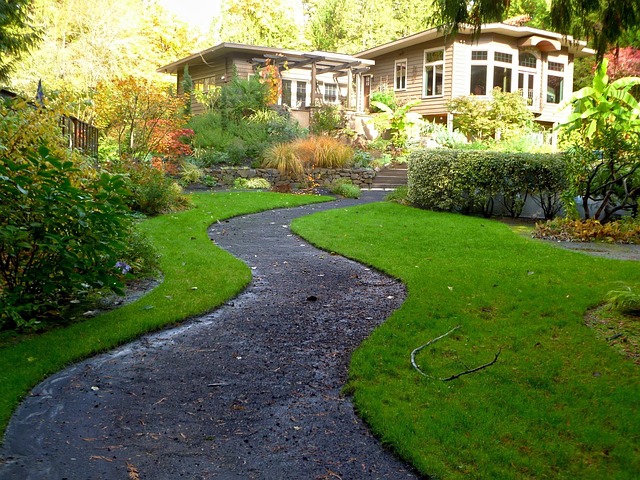
Your home’s exterior is the first line of defense against the elements. It protects your family, belongings, and the structural integrity of the property. However, over time, exposure to harsh weather conditions, environmental factors, and natural wear can cause damage that might go unnoticed until it becomes a significant issue. Recognizing the early warning signs can save you from costly repairs and maintain your home’s value.
Cracked or Peeling Paint
Cracked or peeling paint is more than just an aesthetic issue—it can be an early sign of moisture problems or exposure damage. When the paint starts to bubble, flake, or crack, it means your home’s protective barrier is compromised, allowing moisture to seep into the underlying materials. This can lead to wood rot, mold growth, and structural damage over time.
Regularly inspect your home’s exterior walls, especially around windows, doors, and trim. If you notice significant areas of peeling or fading paint, it’s time to take action. Repainting not only improves your home’s curb appeal but also adds a fresh protective layer to shield it from the elements.
Visible Roof Damage
Your roof takes the brunt of weather conditions, from scorching sun to heavy rain, snow, and strong winds. Over time, shingles can crack, curl, or even go missing, leaving your roof vulnerable to leaks and water damage. If you spot dark streaks, moss growth, or sagging areas, these could be signs of underlying moisture issues or structural weakness.
Routine roof inspections, especially after severe storms, can help identify problems early. Look for granules from shingles accumulating in gutters, as this indicates wear. If you notice any of these signs, don’t delay—addressing minor roof issues promptly can prevent extensive water damage inside your home.
Leaks and Drafts Around Windows and Doors
Windows and doors are common weak points in a home’s exterior, often allowing drafts, water, and pests to enter if not properly sealed. If you notice cold drafts, condensation between window panes, or water leaks during rain, these are signs that your windows or doors need attention.
Check for gaps in the caulking or weather stripping around frames. Replacing old, inefficient windows with energy-efficient models can improve insulation, reduce energy costs, and enhance your home’s comfort. In some cases, resealing or minor repairs can resolve the issue, but persistent problems may require professional intervention. If these issues persist despite DIY fixes, it’s wise to contact a roofer now to assess potential exterior damage that could be contributing to the problem. Addressing these signs promptly can prevent minor issues from escalating into major, costly repairs.
Water Stains or Moisture Damage
Water stains on your home’s exterior walls or around windows and doors are clear indicators of moisture intrusion. These stains often appear as dark, discolored patches and may be accompanied by mold or mildew growth. Moisture damage can weaken the structural integrity of your home, leading to rot, decay, and expensive repairs.
Inspect areas where water is likely to collect, such as near gutters, downspouts, and the base of exterior walls. Ensure your gutters are clean and functioning correctly to divert water away from your home. Addressing drainage issues promptly can prevent moisture-related problems from escalating.
Cracks in the Foundation or Exterior Walls
Cracks in your home’s foundation or exterior walls should never be ignored. While small hairline cracks are often due to normal settling, larger or widening cracks may signal more serious structural issues. Horizontal cracks, in particular, can indicate foundation movement or pressure from soil expansion.
Examine your foundation regularly, paying attention to the size, direction, and changes in cracks over time. If you find cracks that are wider than a quarter-inch, or if they appear suddenly, it’s essential to seek professional advice. Foundation problems can compromise your home’s stability and safety if left unaddressed.

Deteriorating Siding
Siding serves as a protective shield for your home, guarding against weather, pests, and moisture. When siding begins to warp, crack, or rot, it loses its ability to keep your home safe. Faded or discolored siding may also indicate UV damage or moisture infiltration beneath the surface.
Gently press on the siding in various spots—if it feels soft, spongy, or shows signs of rot, repairs or replacement are necessary. Ignoring damaged siding can lead to more extensive issues, including water damage, mold growth, and even pest infestations. Address siding problems promptly to maintain both the appearance and integrity of your home.
Maintaining your home’s exterior is essential for preserving its structural integrity, aesthetic appeal, and overall value. Ignoring early warning signs like cracked paint, roof damage, moisture stains, foundation cracks, deteriorating siding, or drafts around windows and doors can lead to costly repairs and even compromise the safety of your home. By staying vigilant and conducting regular inspections, you can identify these issues before they escalate into more severe problems.
Proactive maintenance not only saves money in the long run but also extends the lifespan of critical components like your roof, siding, and foundation. It’s important to address even minor issues promptly, as they often signal underlying problems that could worsen over time. Don’t underestimate the impact of seemingly small signs—what starts as a minor crack or a missing shingle can quickly evolve into significant structural damage if left unattended.
Protecting your home requires a combination of routine checks, timely repairs, and professional assistance when needed. Whether it’s scheduling a roof inspection after a storm, sealing gaps around windows, or replacing damaged siding, every action contributes to safeguarding your home. By prioritizing exterior maintenance, you ensure a secure, energy-efficient, and visually appealing living space for years to come.





